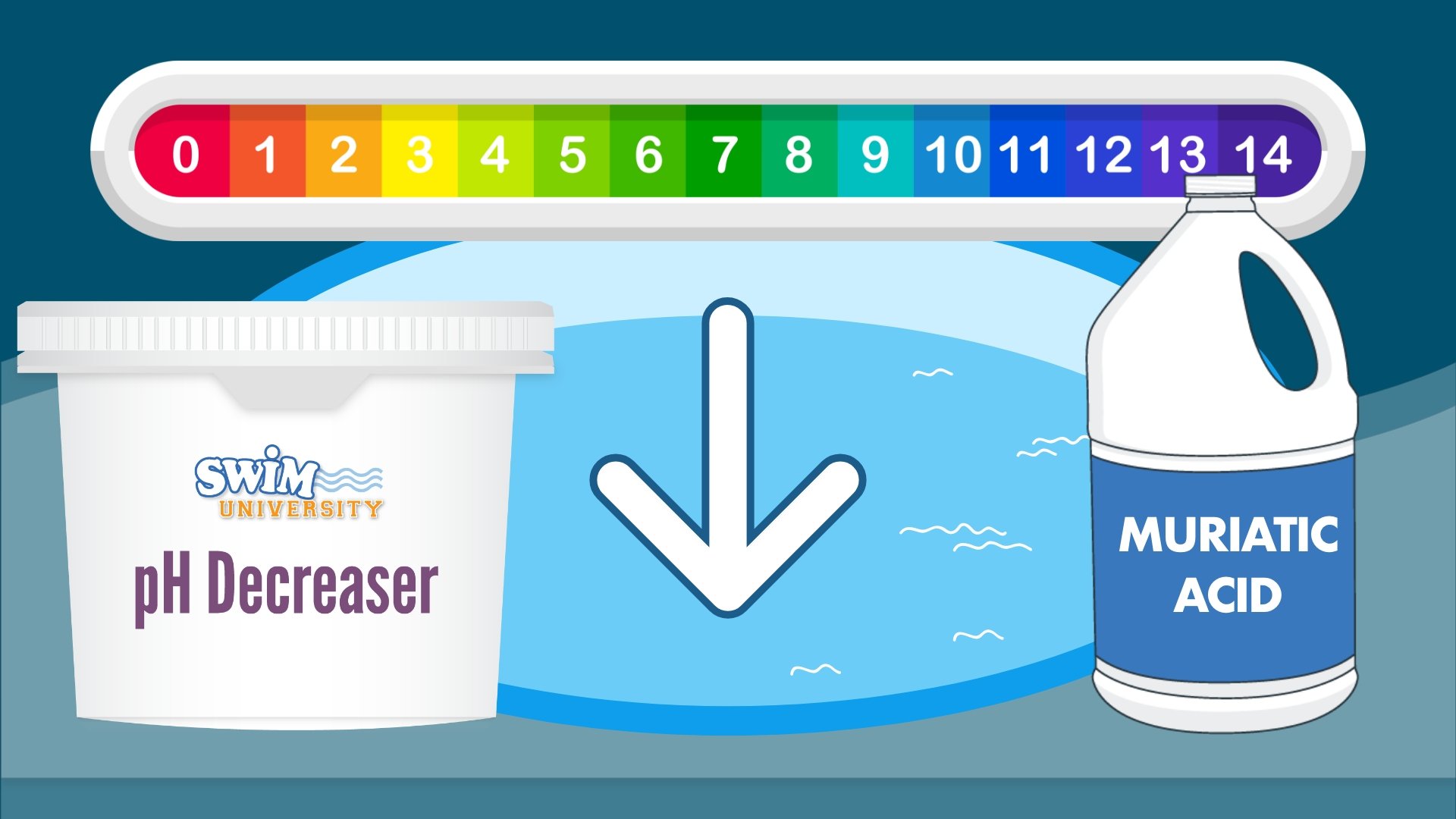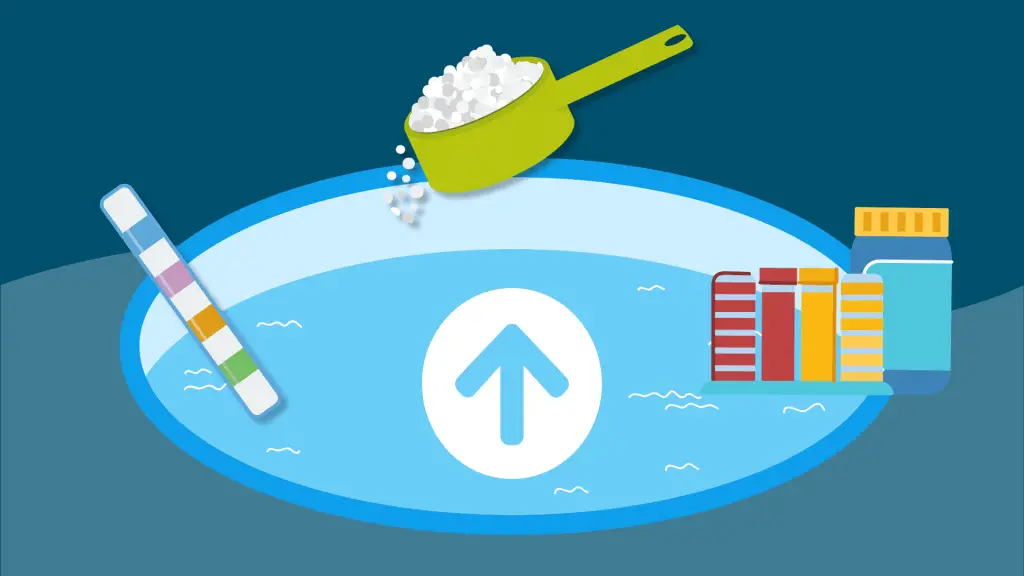To raise pool pH, add pH increaser chemicals or soda ash into the water and test the pH level regularly. If the pH level in your pool is low and needs to be raised, there are specific steps you can take to effectively increase the pH level.
By adding pH increaser chemicals or soda ash into the water and testing the pH level regularly, you can ensure a balanced pH level in your pool. This article will provide you with all the necessary information and steps to follow in order to safely and accurately raise the pH level in your pool.
By following these guidelines, you can maintain a healthy and properly balanced pool pH level, ensuring a safe swimming environment.

Credit: www.youtube.com
Importance Of Ph Balance In Pools
Maintaining the pH balance in swimming pools is vital for water safety and comfort. If you need to raise the pH level in your pool, there are several effective methods you can employ.
Ensuring the pH balance of your pool is crucial to maintaining the water quality and the overall condition of the pool. The pH level indicates how acidic or basic the water is. It is essential to understand the importance of pH balance to prevent various issues such as skin and eye irritation, damage to pool equipment, and inefficient chlorine disinfection.
Effects Of Ph Imbalance On Pool Water
A high or low pH level can have detrimental effects on pool water. A low pH can cause corrosion of metal parts, staining, and deteriorating the pool surface. On the other hand, a high pH can lead to scale formation, reduced effectiveness of chlorine, and cloudy water, creating an environment for harmful bacteria and algae to thrive.
Optimal Ph Range For Pool Water
Maintaining the pH level between 7.4 and 7.6 is crucial for ideal pool water conditions. This range ensures that the water is neither too acidic nor too alkaline, providing a comfortable swimming experience while prolonging the lifespan of the pool equipment and surfaces. Monitoring the pH level regularly and making necessary adjustments is vital to preserving the pool’s integrity and ensuring a safe and enjoyable swimming environment.

Credit: www.swimuniversity.com
Testing Pool Ph
Testing the pH of your pool water is a crucial step in maintaining a safe and enjoyable swimming environment. Proper pH levels ensure the effectiveness of sanitizers and prevent corrosion of pool equipment. Here’s a closer look at the methods and frequency of testing pool pH to help you maintain a well-balanced pool.
Methods To Test Ph Levels
To measure your pool’s pH, you can use test strips, liquid test kits, or digital pH testers. Test strips are convenient and provide a quick indication of your pool’s pH level. Liquid test kits, on the other hand, offer more precise results and are suitable for regular testing. Digital pH testers are the most accurate option and are ideal for frequent monitoring of pH levels.
Frequency Of Testing Ph
The frequency of testing your pool’s pH depends on several factors, such as pool usage, weather conditions, and the use of chemicals. As a general guideline, it’s recommended to test the pH levels at least twice a week, especially during periods of heavy pool usage or when adding chemicals to the water. Regular testing helps you identify and address any pH imbalances promptly, ensuring a safe and comfortable swimming environment for you and your family.
Increasing Pool Ph
Increasing Pool pH is crucial for maintaining the water balance and overall safety of your pool.
Using Ph Increaser Chemicals
pH Increaser chemicals are formulated to effectively raise the pH level of your pool water.
- Choose a high-quality pH Increaser chemical from a reputable pool supply store.
- Follow the manufacturer’s instructions carefully for proper dosage and application.
- Distribute the pH Increaser evenly across the pool to ensure uniform pH adjustment.
Natural Ways To Raise Ph
Natural methods can also help increase the pH level of your pool without relying on chemicals.
- Aeration: Use a fountain or waterfall feature to introduce oxygen into the water, which can raise pH.
- Baking Soda: Add baking soda in small increments to gradually raise the pH level of the pool.
- Aerate the Water: Allow fresh water to circulate in the pool to increase oxygen levels.

Credit: www.armandhammer.com
Steps To Safely Adjust Pool Ph
Properly maintaining the pH level of your pool is pivotal for ensuring the water remains sparkling clean and safe for swimming. If you notice that the pH level of your pool is unbalanced, it’s essential to take immediate steps to adjust it. In this article, we will walk you through the process of safely adjusting the pH level of your pool step by step, ensuring your swimming pool remains a refreshing oasis for everyone to enjoy.
Precautions Before Adding Chemicals
Before we dive into the process of adjusting the pH level, it is important to take some precautions to ensure our safety and the effectiveness of the chemicals we add to our pool. Below are a few precautions that you need to keep in mind:
- Protective Gear: Always wear gloves and safety goggles when handling chemicals to protect your skin and eyes.
- Proper Ventilation: Ensure the pool area is well-ventilated before adding chemicals to prevent inhaling hazardous fumes.
- Follow Manufacturer’s Instructions: Carefully read and follow the instructions provided by the manufacturers of the pool chemicals for accurate measurements and usage guidelines.
Gradual Ph Adjustment Process
Now that you’ve taken the necessary precautions, let’s move on to the step-by-step process of adjusting the pH level of your pool:
- Test pH Level: Begin by testing the current pH level of your pool using a pH testing kit. This will help you determine if you need to increase or decrease the pH level.
- Choose the Appropriate Chemical: Depending on your pH test results, select the appropriate chemical to adjust the pH level. To increase pH, you may need to add soda ash or sodium bicarbonate, while to decrease pH, you might require muriatic acid or sodium bisulfate.
- Handle the Chemicals Safely: Follow the precautions mentioned earlier when handling the chemicals. Remember to add chemicals to water, not the other way around, to prevent dangerous reactions.
- Measure Your Quantity: Use a measuring cup or scale to accurately measure the amount of chemical needed, as specified on the packaging or by a pool professional.
- Add Chemicals Gradually: Slowly pour the appropriate amount of chemical into the pool while the pump is running to ensure proper distribution.
- Wait and Retest: Allow the chemicals to circulate in the pool for several hours or as recommended by the manufacturer. Afterward, retest the pH level to ensure it has reached the desired range.
Following these steps will help you safely and effectively adjust the pH level of your pool, ensuring a balanced and comfortable swimming experience. Remember to regularly test and monitor the pH level of your pool to address any imbalances promptly and maintain a pristine swimming pool environment for you and your loved ones.
Maintaining Balanced Ph Levels
Maintaining balanced pH levels in your pool is crucial for optimal water quality. Learn how to raise the pH levels effectively with these simple steps.
Maintaining Balanced pH Levels Maintaining a balanced pH level is crucial for the health and longevity of your pool. Regular monitoring and adjustments are essential to ensure that your pool water maintains the optimal pH range. Being aware of the factors affecting pH stability is equally important in keeping your pool water safe and enjoyable for swimming. Let’s delve into these aspects in more detail.Regular Monitoring And Adjustments
To maintain balanced pH levels, it’s important to regularly monitor the pH of your pool water using a reliable testing kit. Adjust the pH level as needed to keep it within the optimal range of 7.4 to 7.6. Use pH increaser to raise the pH if it’s too low, or pH decreaser to lower the pH if it’s too high. Make small adjustments at a time, retest, and then continue until the optimal pH range is achieved.Factors Affecting Ph Stability
Several factors can affect the stability of your pool’s pH level. These include swimmers’ use, weather conditions, chemical imbalances, and debris in the pool. The number of swimmers using the pool can introduce organic compounds and affect the pH level. Weather conditions such as rain can dilute the pool water and affect its pH. Additionally, chemical imbalances and the presence of debris can also impact pH stability. Regularly addressing these factors will help maintain balanced pH levels. In conclusion, ensuring you regularly monitor and adjust the pH level of your pool water, as well as understanding the factors affecting pH stability, are essential for maintaining balanced pH levels in your pool.Common Mistakes To Avoid
It’s crucial to maintain the pH level of your pool, but certain mistakes can lead to imbalance and water quality issues.
Overdosing With Ph Increaser
Using too much pH increaser can cause a sudden spike in pH levels, leading to alkaline water and potential damage to pool equipment.
Follow manufacturer guidelines and measure accurately to avoid overtreating your pool with pH increaser.
Ignoring Ph Levels
Neglecting pH monitoring can result in unbalanced water chemistry, impacting swimmer comfort and promoting algae growth.
Regularly test pH levels and adjust as needed to maintain a safe and enjoyable swimming environment.
Professional Help And Consultation
Raising the pH level of your pool can sometimes be a challenging task, especially when standard methods don’t seem to be working. This is when seeking professional help and consultation becomes essential. Professional assistance can provide tailored solutions and expert advice to ensure your pool water stays balanced and safe for swimming. Below, we’ll explore the important aspects of seeking professional assistance and the benefits of hiring a pool service.
When To Seek Professional Assistance
If you find that your efforts to raise the pH of your pool water have been unsuccessful or if you are unsure of the appropriate course of action, it may be time to seek professional assistance. A professional pool service can assess the specific needs of your pool and provide a tailored solution based on factors such as the size of the pool, the current pH level, and any existing chemical imbalances.
Benefits Of Hiring A Pool Service
Expert guidance: Pool services employ professionals who have a deep understanding of water chemistry and are equipped to provide accurate guidance on how to raise the pH of your pool effectively.
Specialized equipment: Pool services have access to specialized equipment and products that may not be readily available to the average pool owner, ensuring a more efficient and precise treatment of pool water.
Time-saving: By hiring a pool service, you can save time and effort as they will handle all aspects of adjusting the pH level, allowing you to focus on enjoying your pool.
Conclusion
Maintaining the pH level of your pool is crucial for its health and cleanliness. By following the steps outlined in this guide, you can easily raise the pH of your pool water. Remember to regularly test and adjust the pH levels to ensure a safe and enjoyable swimming experience for you and your family.





